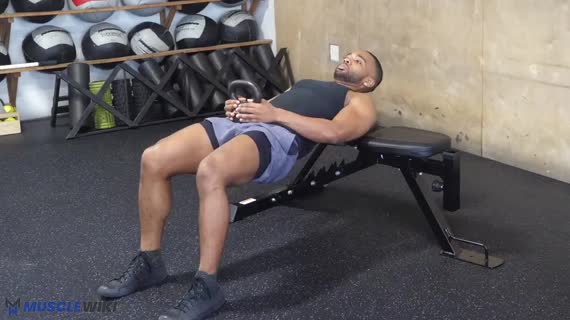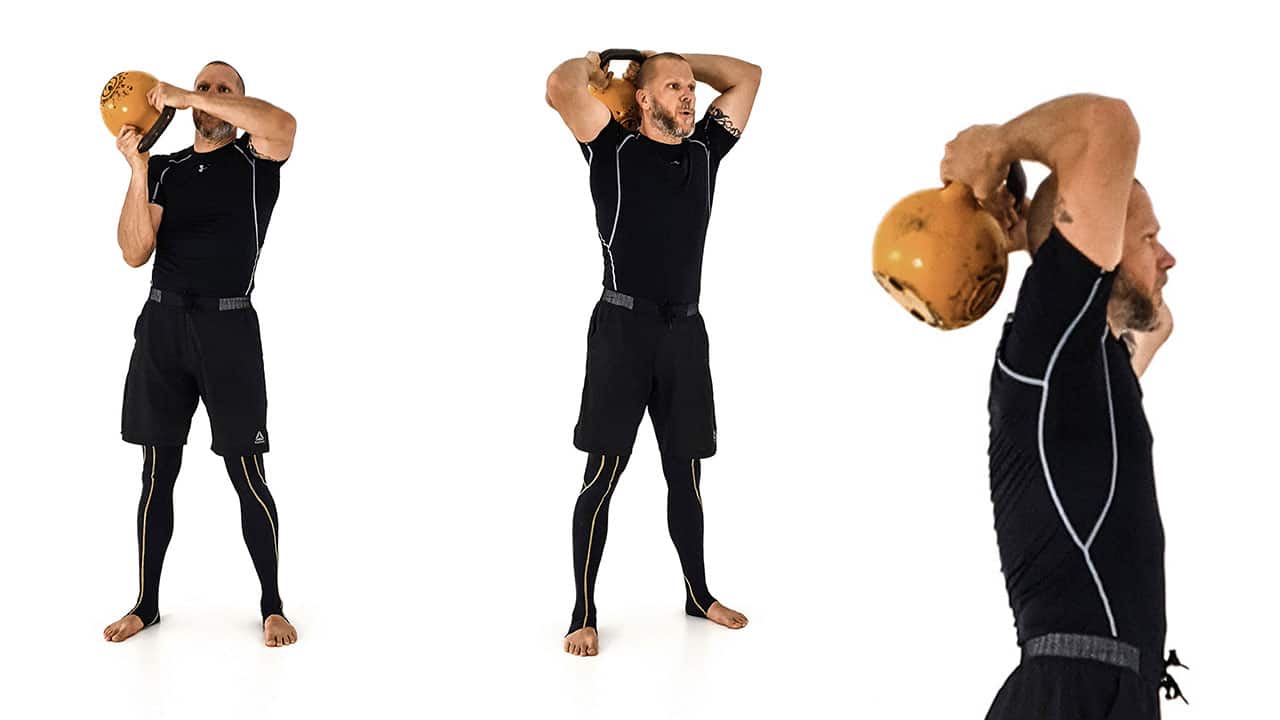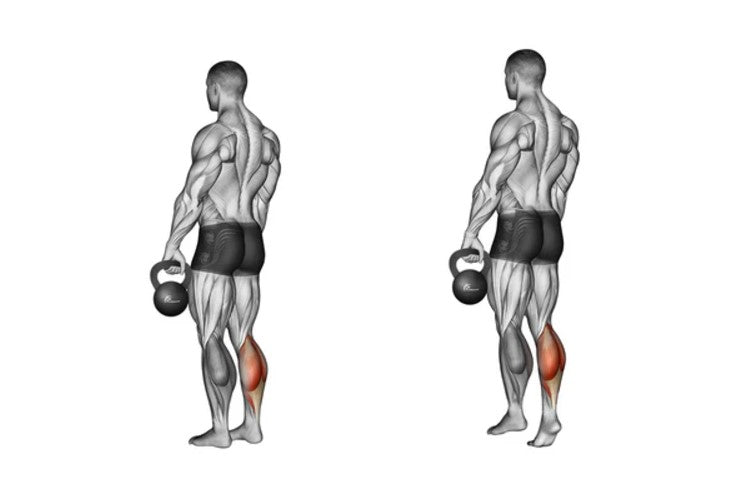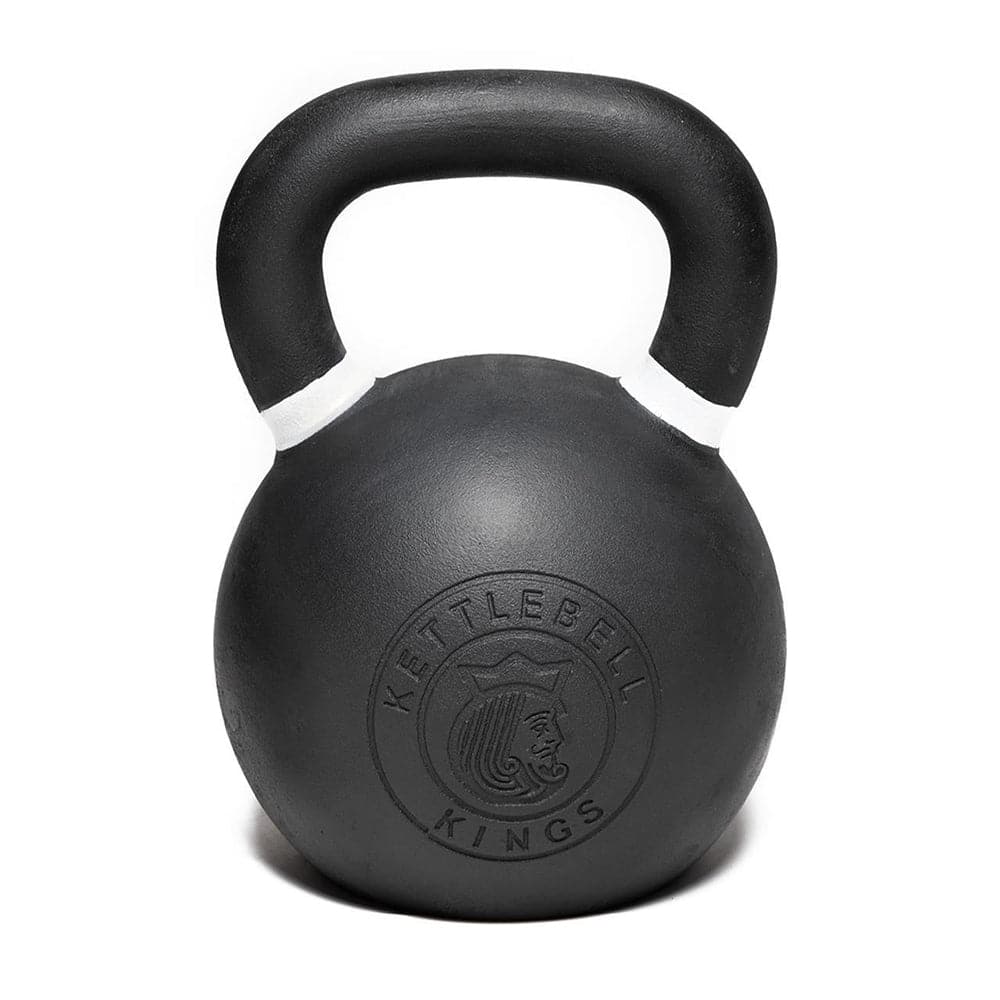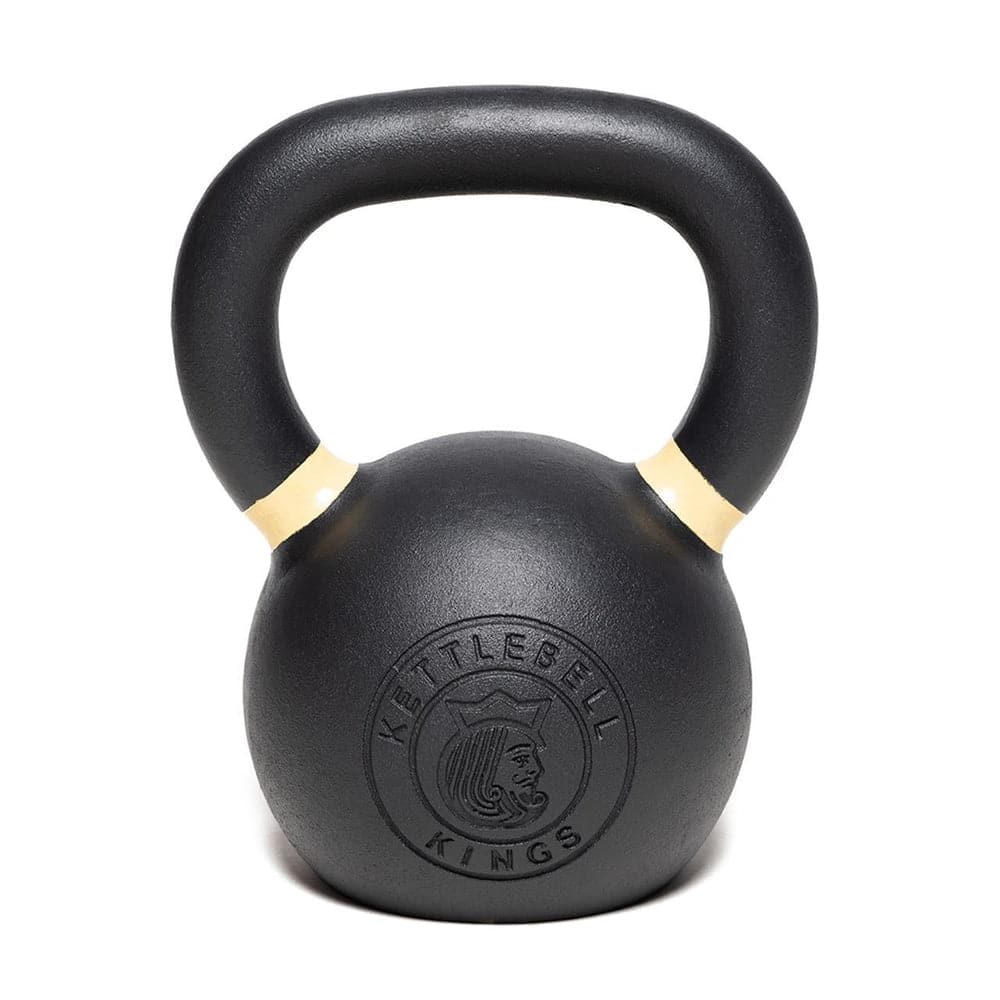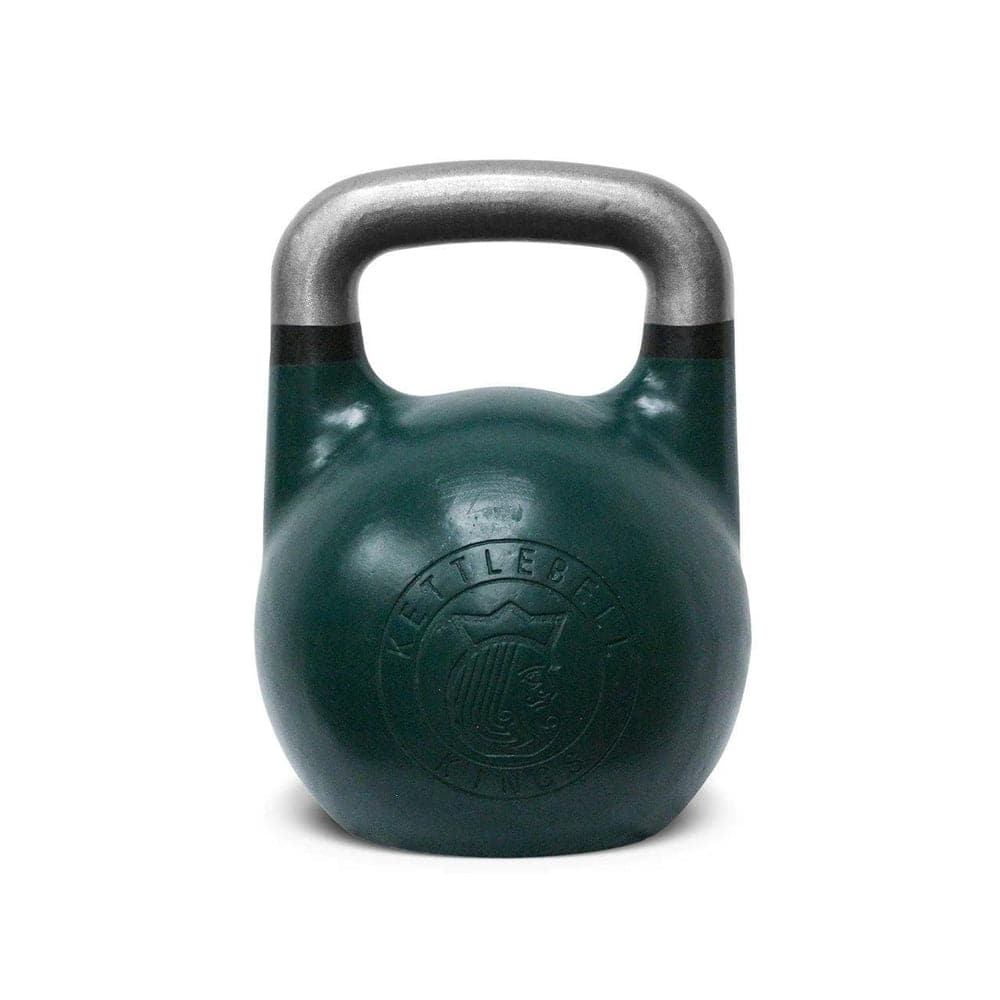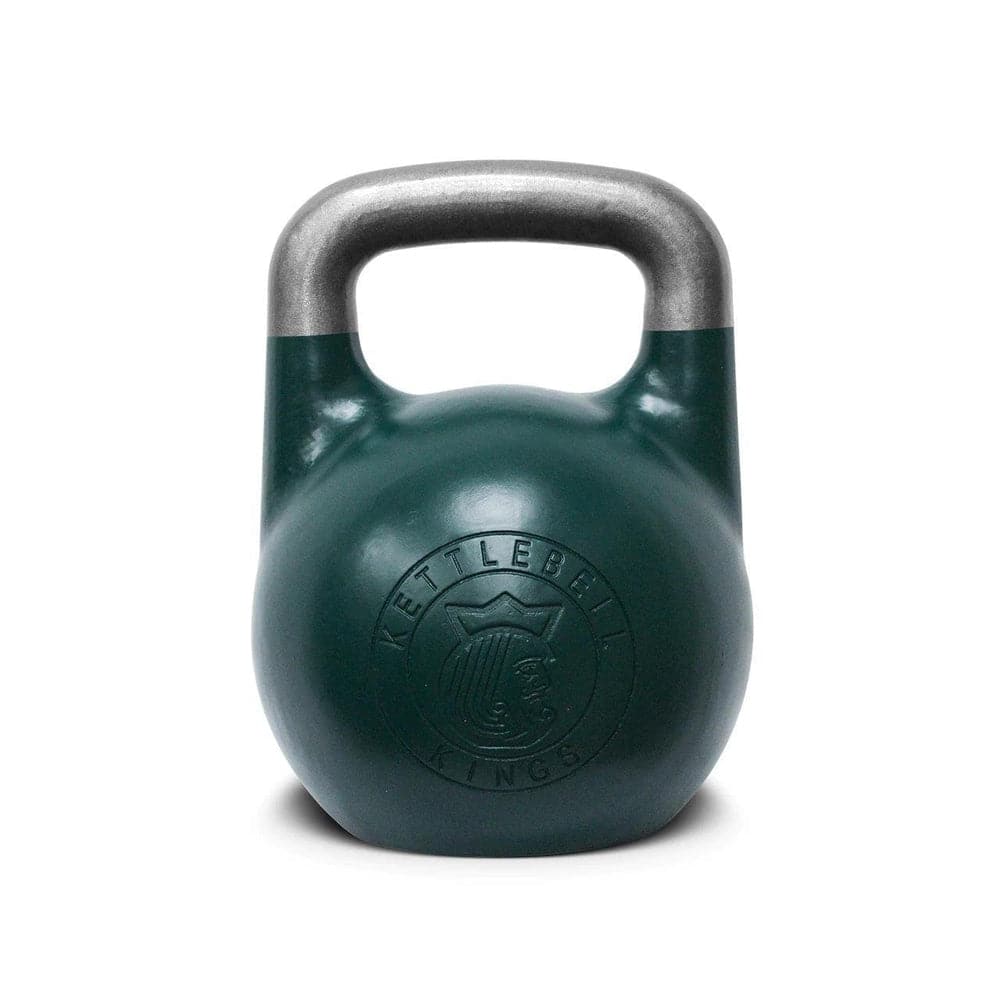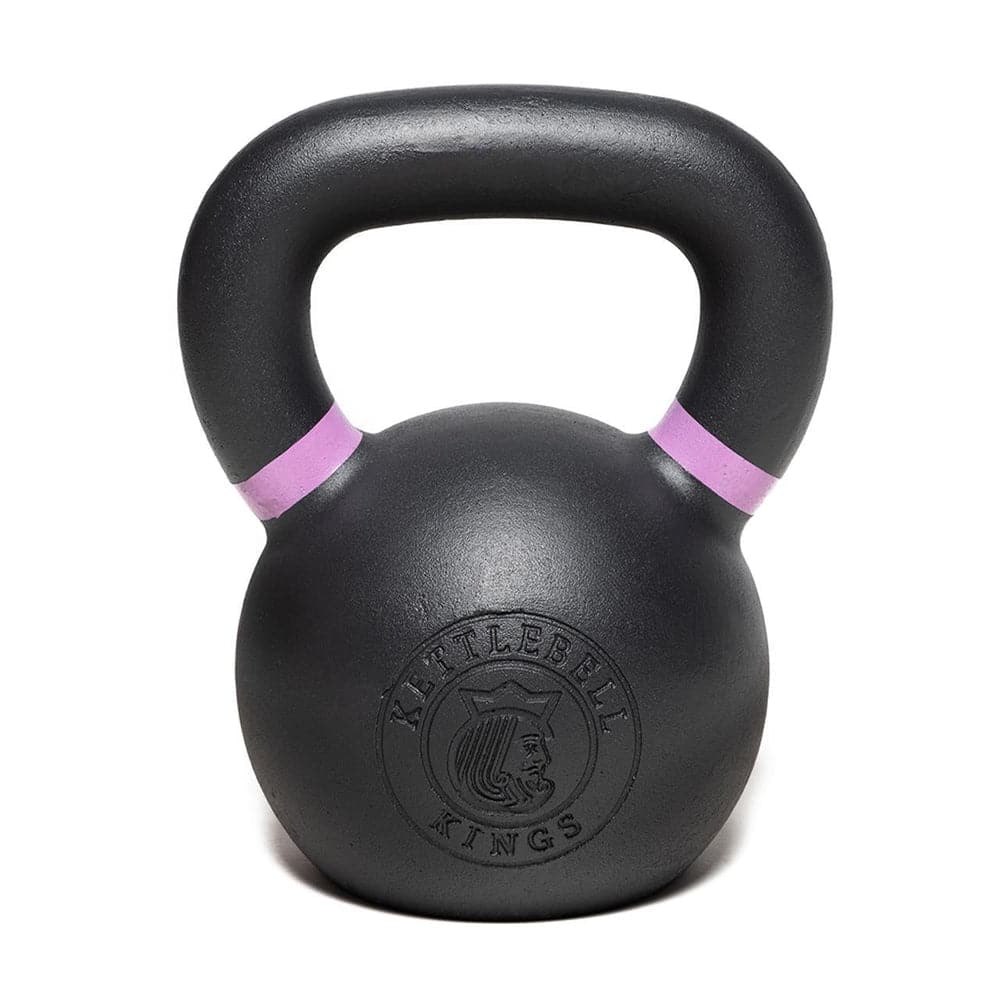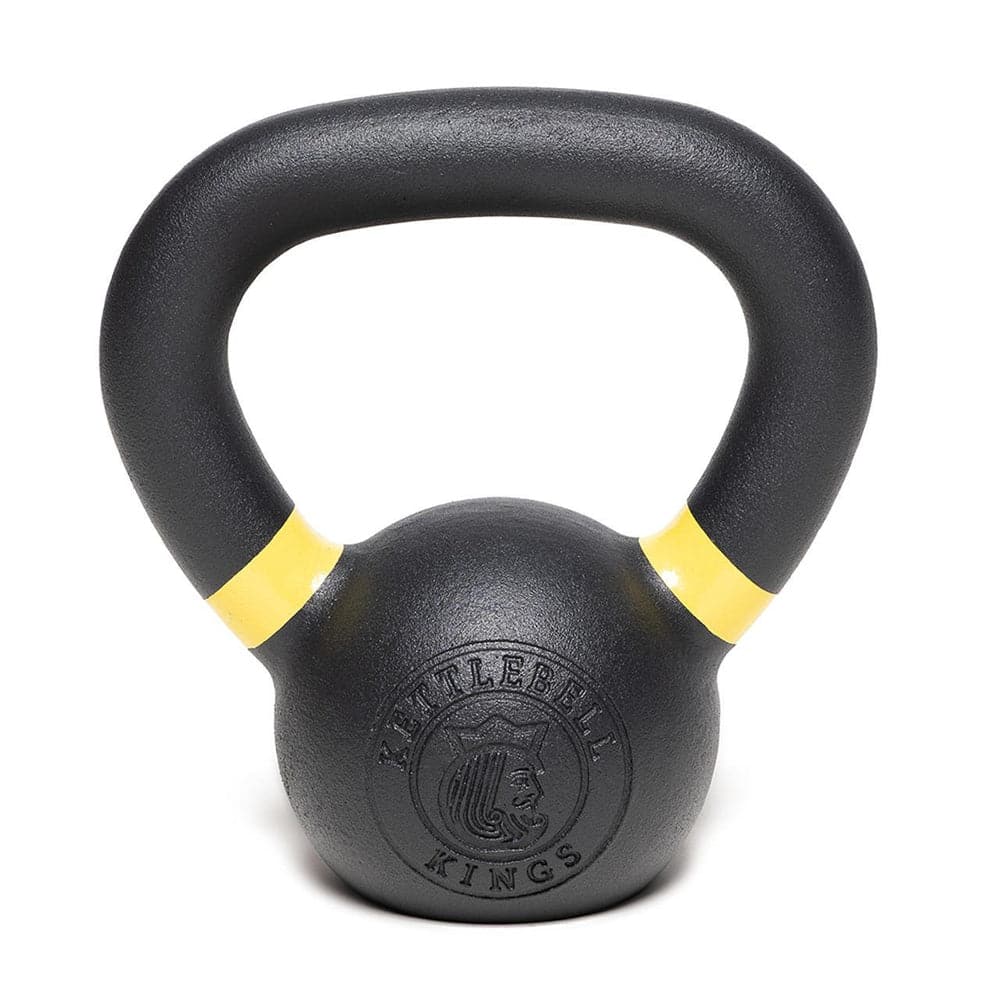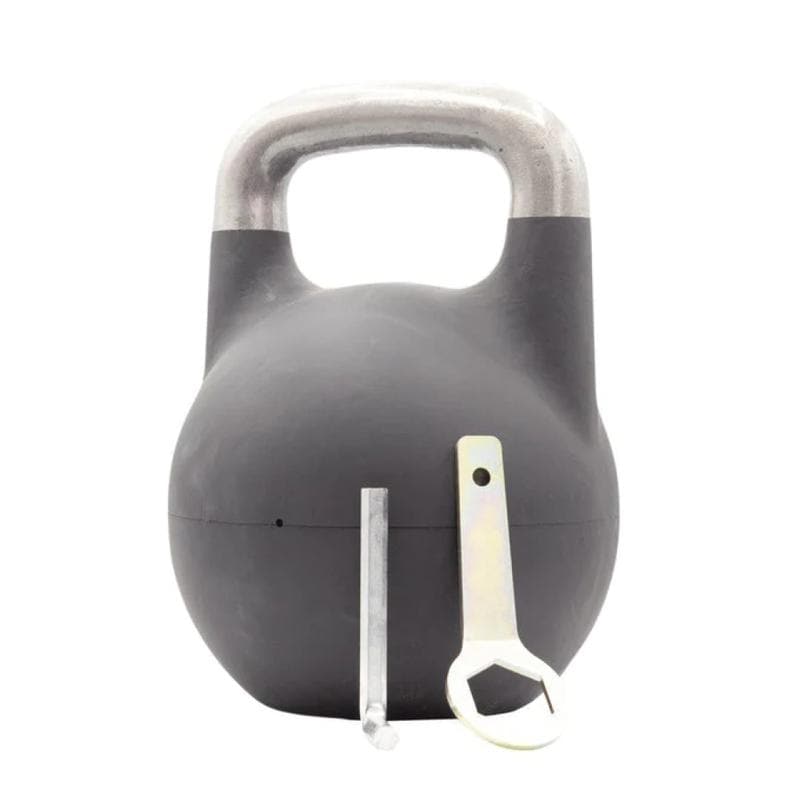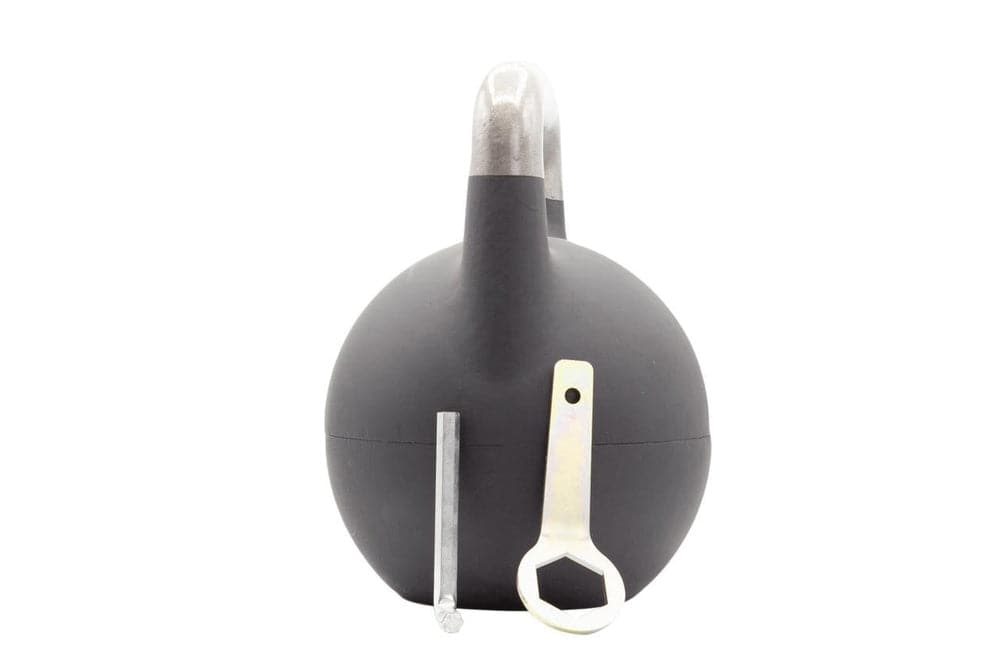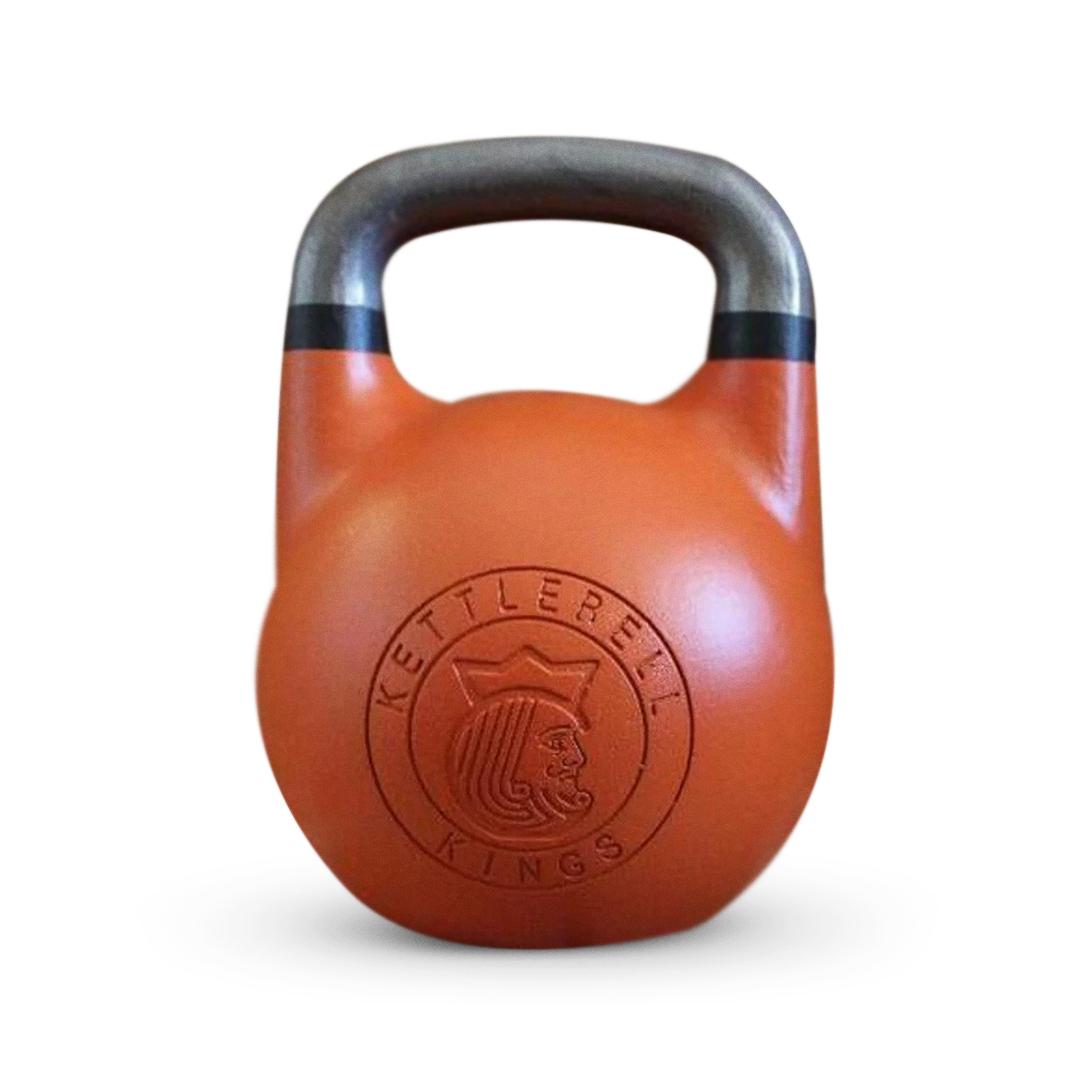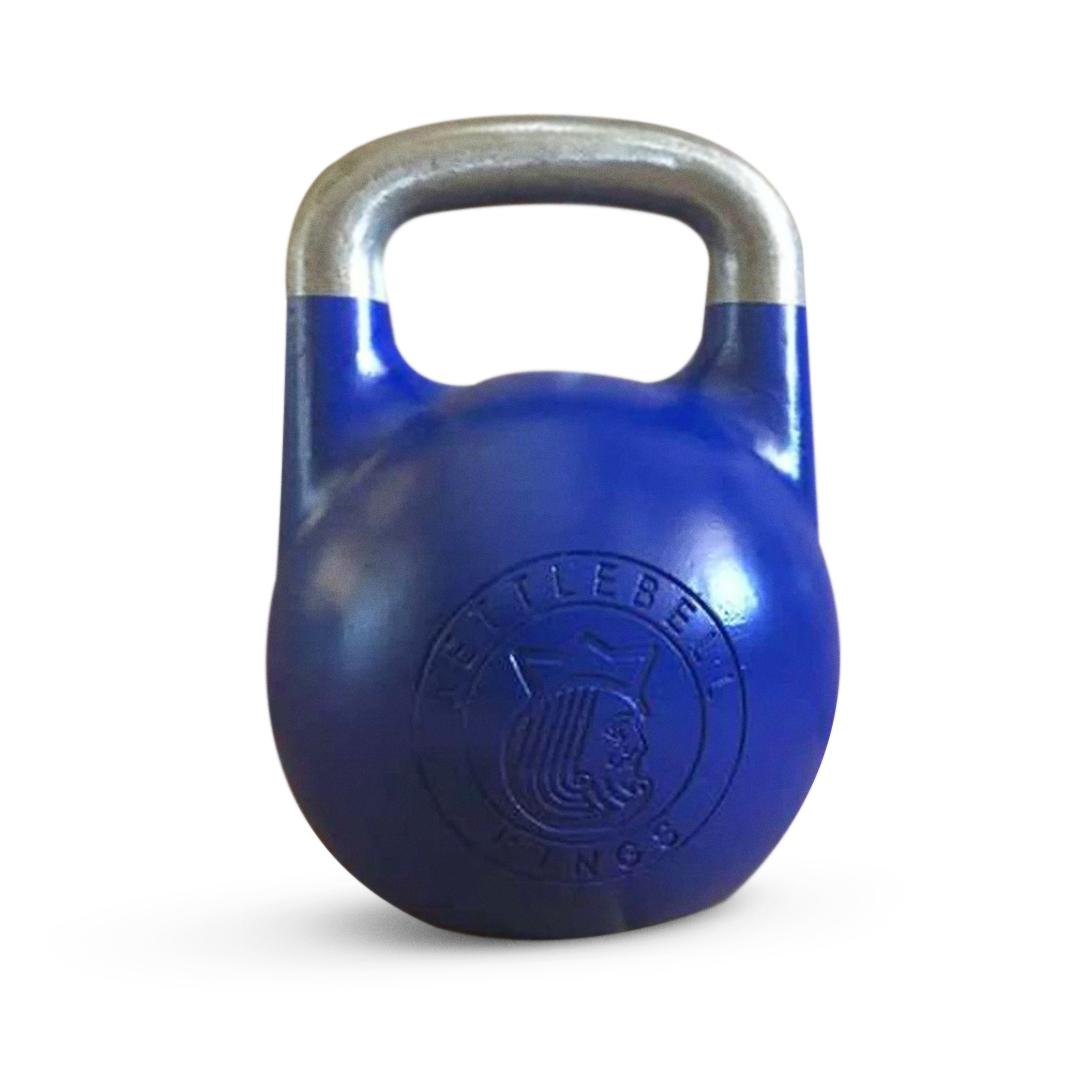The kettlebell hip thrust not only provides a targeted approach to strengthening the glutes and hamstrings but also promotes functional movement patterns that are beneficial for overall athletic performance. Because it emphasizes the posterior chain, it plays a crucial role in improving hip extension, which is essential for activities such as running, jumping, and squatting. The kettlebell's portability and versatility also make it an ideal choice for both beginners and advanced athletes, allowing for scalable resistance and varying intensity based on your fitness level. Whether you're aiming for improved strength, muscle hypertrophy, or enhanced power, the kettlebell hip thrust can be easily incorporated into any workout regimen, making it an indispensable exercise for building a stronger, more resilient lower body.
What is a Kettlebell Hip Thrust and How Does It Differ from Barbell Hip Thrusts?
The kettlebell hip thrust is a lower-body strength exercise where a kettlebell rests on the pelvis while the hips thrust upward, engaging the glutes. The main difference between kettlebell and barbell hip thrusts lies in the equipment used and the load distribution.
- Barbell Hip Thrusts: Often preferred for maximum strength gains, barbells allow for heavier loads but may require additional equipment and setup.
- Kettlebell Hip Thrusts: Ideal for beginners or those with limited equipment, kettlebells provide a compact and easily adjustable option while still delivering significant benefits.
Understanding the Mechanics of Kettlebell Hip Thrusts
At the core of the kettlebell hip thrust is the hip hinge movement, which involves extending the hips to lift the weight. Proper form ensures maximal glute engagement and minimizes the risk of injury. Key components include:
- Setup: Position yourself with your upper back supported on a bench and feet flat on the ground. Place the kettlebell on your pelvis.
- Execution: Drive through your heels, lift your hips until they align with your shoulders and knees, then lower back down.
- Focus: Maintain a neutral spine and engage your core to stabilize the movement.
Differences Between Barbell Hip Thrusts and Kettlebell Hip Thrusts
|
Aspect |
Barbell Hip Thrusts |
Kettlebell Hip Thrusts |
|
Equipment |
Requires a barbell, weight plates, and a bench or platform. |
Requires a kettlebell and a bench or stable surface. |
|
Weight Load |
Allows for significantly heavier weight, ideal for advanced lifters. |
Offers moderate loading, suitable for beginners and intermediates. |
|
Setup Complexity |
More complex setup; requires loading plates and balancing the barbell. |
Simple and quick setup with a single kettlebell. |
|
Focus |
Primarily targets maximum glute strength and power. |
Focuses on glute activation with additional stability challenges. |
|
Versatility |
Less versatile; mainly used for heavy strength training. |
Highly versatile; suitable for various fitness levels and goals. |
|
Core Engagement |
Moderate core involvement for stability. |
Greater core engagement due to the smaller, uneven kettlebell load. |
|
Range of Motion |
Typically offers a slightly larger range of motion. |
May have a limited range of motion depending on kettlebell size. |
|
Portability |
Less portable due to bulky equipment. |
Portable and easy to use in home or outdoor settings. |
|
Learning Curve |
Steeper learning curve due to balancing a heavier barbell. |
Easier to learn, making it beginner-friendly. |
|
Exercise Variations |
Limited to adding resistance bands or altering foot placement. |
Allows for single-leg, banded, and elevated variations. |
|
Safety |
Requires careful handling of heavy weights to avoid injury. |
Safer for lower weight loads, reducing the risk of strain. |
|
Ideal For |
Advanced lifters aiming for maximum strength and hypertrophy. |
Beginners, intermediates, or those focusing on versatility and stability. |
Comparing Kettlebell and Barbell Hip Thrusts: Pros and Cons
Kettlebell Hip Thrusts
Pros
-
Portable
One of the biggest advantages of kettlebell hip thrusts is that kettlebells are small and portable. You can easily perform them at home, at the gym, or even in outdoor spaces without the need for bulky equipment. This makes it ideal for those who don’t have access to a full gym setup or prefer to work out in smaller spaces. -
Beginner-Friendly
Kettlebell hip thrusts are a great choice for beginners who are just starting to train the glutes and hip muscles. The movement can be performed with lighter weights, allowing new lifters to focus on perfecting their form before progressing to heavier loads. -
Ideal for Unilateral Exercises
Since kettlebells come in various sizes and weights, they can easily be used for unilateral (single-leg) exercises. Performing hip thrusts with one kettlebell in one hand or with a kettlebell on one leg can help address muscle imbalances, build stability, and improve balance.
Cons
-
Limited Progression for Heavy Lifters
While kettlebell hip thrusts are excellent for beginners and those seeking moderate resistance, they have limitations in terms of how much weight you can use. As a lifter becomes more advanced and requires heavier loads to stimulate muscle growth, kettlebells may not be sufficient. Progressing beyond a certain weight may become difficult, especially for individuals aiming for maximal strength or hypertrophy.
Barbell Hip Thrusts
Pros
-
Allows for Heavier Loads
Barbell hip thrusts are often considered the gold standard for building glute strength, as they allow for much heavier weights compared to kettlebells. The ability to load the barbell with heavy plates means you can progressively overload your muscles to build maximal strength and size in your glutes and hamstrings. -
Excellent for Building Maximal Strength
If you are looking to increase the overall strength of your lower body, especially in the glutes, hamstrings, and hips, barbell hip thrusts are one of the best exercises to include. The barbell’s heavier load capacity allows for progressive strength training, making it ideal for more advanced lifters.
Cons
-
Requires More Equipment
To perform barbell hip thrusts, you’ll need a bench or platform to rest your upper back on, along with a barbell and weight plates. This setup requires more space and equipment compared to kettlebell hip thrusts, which may be inconvenient for those training at home or in a limited space. -
May Feel Uncomfortable for Some Users
One downside of barbell hip thrusts is that the barbell can sometimes cause discomfort, especially if the weight is not properly positioned on the hips. Some people experience pinching or bruising from the bar, particularly during heavy lifts. This discomfort can be mitigated by using a barbell pad or by adjusting the positioning of the bar, but it's still a factor to consider.
Benefits of Incorporating Kettlebell Hip Thrusts in Your Workout
1. Glute Activation
The kettlebell hip thrust specifically targets the gluteus maximus, the largest muscle in your body. This focused activation improves the strength and power of your glutes, contributing to enhanced athletic performance, functional strength, and a more defined and aesthetic lower body.
2. Hamstring Engagement
This exercise also engages the hamstrings, located at the back of your thighs, promoting a balanced development of the posterior chain. Strong hamstrings support knee health, reduce the risk of injury, and complement the work of the glutes during hip extension.
3. Core Stability
To maintain proper form during the kettlebell hip thrust, your core muscles work to stabilize your pelvis and spine. This enhances overall stability and balance, which are crucial for functional movements and reducing injury risk in everyday activities.
4. Lower Back Health
Strengthening the glutes and hamstrings through this exercise helps offload stress from the lower back. This reduces the risk of lower back pain and injuries, as well-developed posterior chain muscles provide better support for your lumbar spine.
5. Versatility
Kettlebell hip thrusts are highly adaptable, making them suitable for people of all fitness levels. Whether you're a beginner working on form or an experienced lifter looking for a home workout option, the kettlebell hip thrust can be modified with variations or progressive loading to match your goals.
In summary, the kettlebell hip thrust is an efficient, versatile exercise that delivers multiple benefits, enhancing strength, aesthetics, and functional fitness.
How to Perform a Kettlebell Hip Thrust with Proper Form
Step-by-Step Guide
1. Setup
Begin by sitting on the ground with your back against a sturdy bench. Bend your knees so your feet are flat on the floor, about hip-width apart. Place a kettlebell on your pelvis, holding it securely with both hands to keep it steady during the movement. Ensure the bench is positioned at mid-back level when you're in the lifted position.
2. Positioning
Lean back slightly and roll your shoulder blades onto the edge of the bench. Your upper back should be stable on the bench, with your head and neck in a neutral position. This setup ensures your spine remains aligned and reduces unnecessary strain on your lower back.
3. Lift
Drive through your heels, pressing firmly into the ground. As you lift your hips upward, focus on squeezing your glutes at the top of the movement. Your body should form a straight line from your knees to your shoulders in the peak position. Avoid overarching your lower back or letting your ribs flare out.
4. Lower
Slowly lower your hips back to the starting position with control. Avoid dropping your hips too quickly, as this reduces the effectiveness of the exercise and increases the risk of injury. Keep tension in your glutes throughout the movement.
5. Repeat
Perform 10-12 repetitions for 3-4 sets, depending on your fitness level and goals. Take short rests between sets, and focus on maintaining proper form throughout.
Key Tips for Proper Form
- Foot Placement: Ensure your feet are positioned so your shins are vertical at the top of the movement. Adjust closer or farther away if needed.
- Core Engagement: Brace your core to stabilize your pelvis and avoid unnecessary spinal movement.
- Weight Stability: Hold the kettlebell securely to prevent shifting or rolling during the exercise.
By following these steps and tips, you’ll perform the kettlebell hip thrust effectively, targeting your glutes while minimizing the risk of injury.
Common Mistakes to Avoid During Kettlebell Hip Thrusts
- Arching the Lower Back: Maintain a neutral spine to avoid strain.
- Placing Feet Incorrectly: Ensure your feet are directly below your knees for optimal force generation.
- Rushing the Movement: Prioritize control over speed to maximize effectiveness.
- Neglecting Core Engagement: Engage your core to stabilize the movement and prevent injury.
What Muscles Does the Kettlebell Hip Thrust Target?
The kettlebell hip thrust is a powerful exercise that targets several key muscle groups, making it an excellent choice for building strength, stability, and overall lower-body power. Here's a breakdown of the primary and secondary muscles involved:
Primary Muscle Groups
1. Glutes
The glutes, particularly the gluteus maximus, are the primary focus of the kettlebell hip thrust. This muscle is responsible for hip extension, the main movement in this exercise. Strengthening the glutes not only improves aesthetics by shaping the posterior but also enhances athletic performance, such as sprinting and jumping, and contributes to overall lower-body power.
2. Hamstrings
Located at the back of the thighs, the hamstrings assist in the hip extension movement during the thrust. This complementary action helps balance the workload between the glutes and hamstrings, contributing to a strong and resilient posterior chain.
3. Lower Back
While not the primary target, the muscles of the lower back play a crucial stabilizing role during the kettlebell hip thrust. They ensure proper spinal alignment and support the pelvis, reducing the risk of injury and building foundational strength.
Secondary Muscles
1. Quadriceps
Though the quads are not the main movers in this exercise, they provide necessary support by stabilizing the knees and aiding in maintaining proper alignment during the lift. This ensures smooth execution and balanced engagement across the lower body.
2. Core
The core muscles, including the rectus abdominis, obliques, and transverse abdominis, are heavily engaged to stabilize the pelvis and spine. This engagement enhances balance and coordination, ensuring the movement is performed safely and effectively.
By targeting both primary and secondary muscle groups, the kettlebell hip thrust offers a well-rounded workout. It builds strength and power in the glutes and hamstrings while supporting stability and injury prevention through the activation of the core, lower back, and quadriceps. This makes it an excellent exercise for anyone aiming to improve functional fitness, athletic performance, or aesthetic goals.
Can Kettlebell Hip Thrusts Replace Squats in My Leg Workout?
Kettlebell hip thrusts and squats are both valuable exercises, but they serve distinct purposes in a well-rounded leg workout. Here's an explanation of why they should complement each other rather than act as substitutes:
Kettlebell Hip Thrusts
Kettlebell hip thrusts are primarily focused on the glutes and hip extension, making them excellent for glute-specific training. By isolating the glutes, this exercise helps improve strength, power, and aesthetics in the posterior chain. It's particularly effective for those looking to target the glutes without putting excessive strain on other muscle groups, making it an ideal choice for individuals focusing on building a rounder, stronger backside or recovering from injuries that limit squat performance.
Squats
Squats, on the other hand, are a compound movement that engages multiple muscle groups simultaneously, including the quadriceps, glutes, hamstrings, and core. They are a cornerstone of leg development and provide functional strength, as they mimic everyday movements like sitting and standing. Squats also enhance overall lower-body strength and coordination, making them indispensable for athletic performance and general fitness.
Why Not Replace One with the Other?
While kettlebell hip thrusts excel at glute isolation, they lack the full-body engagement and multi-joint activation provided by squats. Conversely, squats, while comprehensive, don’t isolate the glutes as effectively as hip thrusts do. Replacing squats entirely with kettlebell hip thrusts could result in underdeveloped quadriceps and a lack of functional lower-body strength, while replacing hip thrusts with squats might not achieve the same level of glute activation.
The Balanced Approach
To build a well-rounded lower body, combining both exercises is the best strategy. Perform kettlebell hip thrusts to focus on glute strength and hip extension, and incorporate squats to target the quadriceps, enhance functional strength, and improve overall leg development. This combination ensures balanced muscle growth and better performance across various fitness goals.
Tip
Structure your routine to include both movements in a complementary manner. For example, use squats as your primary strength exercise and follow them with kettlebell hip thrusts for glute isolation. This approach optimizes your workout, ensuring you reap the unique benefits of both exercises.
What Are Some Effective Variations of the Kettlebell Hip Thrust?
Single-Leg Kettlebell Hip Thrust
- Increases the challenge by isolating one side at a time.
- Improves balance and unilateral strength.
Banded Kettlebell Hip Thrust
- Adds resistance to increase glute activation.
- Ideal for advanced lifters.
Elevated Kettlebell Hip Thrust
- Enhances the range of motion for deeper muscle engagement.
- Requires a stable elevated surface.
How Can I Safely Progress with Kettlebell Hip Thrusts?
Increase the Kettlebell Weight Gradually
As your strength improves, gradually increase the weight of the kettlebell to challenge your muscles further. Start with small increments (2-5kg) to avoid strain while maintaining proper form.
Add Repetitions or Sets
To enhance endurance, increase the number of repetitions or sets you perform. For example, move from 10 to 12-15 reps per set or add an extra set to boost volume and stamina.
Experiment with Advanced Variations
Incorporate variations like single-leg, banded, or elevated kettlebell hip thrusts to increase difficulty and stimulate muscle growth in different ways.
Use Progressive Overload
Combine kettlebell sizes and techniques, such as adjusting the tempo or holding the top position longer, to gradually increase intensity and promote continuous progress.
Conclusion
The kettlebell hip thrust is a versatile and effective exercise for building lower body strength, enhancing glute development, and improving core stability. The kettlebell hip thrust not only targets the glutes and hamstrings but also engages the core, making it a comprehensive lower body exercise that promotes overall strength and stability. By adding this movement to your workout regimen, you’ll see improvements in posture, athletic performance, and injury prevention due to the strengthening of key muscle groups. Whether you're aiming for sculpted glutes, increased power in your lower body, or better functional fitness, the kettlebell hip thrust is a highly effective tool. Commit to regular practice, and you'll unlock greater strength and muscular development, helping you achieve your fitness goals more efficiently.
Whether you're a beginner or an experienced lifter, incorporating this movement into your routine can unlock significant gains. With proper form, progression, and a mix of variations, the kettlebell hip thrust can become a cornerstone of your fitness journey.Start mastering the kettlebell hip thrust today and unleash your hip power for a stronger, more balanced physique.








